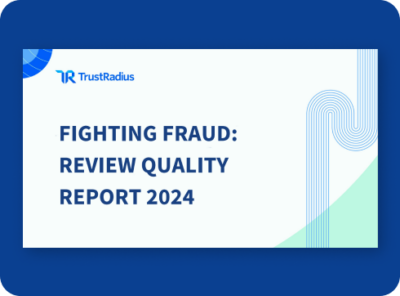
Lifesize CMO on Customer Obsession & Building a Brand Buyers Love
 Tiffany Nels is the CMO of Lifesize, a video conferencing solution that has evolved from hardware-focused company to a robust cloud-based platform. We recently talked to Tiffany about the importance of customers in building a powerful brand.
Tiffany Nels is the CMO of Lifesize, a video conferencing solution that has evolved from hardware-focused company to a robust cloud-based platform. We recently talked to Tiffany about the importance of customers in building a powerful brand.
What is the role of customers and customer voice at Lifesize?
One of our core values at Lifesize is to “Lead with Customer Obsession,” to focus maniacally on our customers. When companies talk about customers from a cultural perspective, it’s usually about customer success and support. But that lens is too narrow — every single part of your business needs to exhibit customer obsession to make it really work.
At Lifesize, this starts with a partnership between sales, marketing, product management, customer success and customer support. These organizations are closest to our customers and their feedback, coupled with insight directly from our customers, is how we define the roadmap. Our customers’ voices also feed into engineering to ensure the product is usable, the code base is extendable, and as we grow, the customer experience is always top of mind.
On the marketing side, customer obsession is making sure that your brand promise creates an emotional connection. We need to authentically communicate that no one will solve this problem better than us, because no one understands you better than we do. We are going to speak your language, dig into what makes you tick, and tell you what you need to know, not what we want you to know.
The first touch with sales is all about developing our relationship and setting the right tone. We are going to work with you to solve your problems. We listen to you so we can be consultative, not salesy. We create a sense of urgency but also move at your pace. And then we make a really smooth transition to our customer success advocates.
If you can perfect this process, you get really strong engagement and insights from your customers, which feeds back into building a world-class product, and the virtuous cycle continues. But if your customers don’t feel that emotional connection, if they don’t feel like you are invested all the way through, they stop sharing that information and the cycle breaks. You’ve got to think about it at every step in order to be really effective.
Digging a little deeper into marketing, how is your team maniacally customer-focused?
In marketing specifically, there are the table stakes — you have customer reviews, case studies, video testimonials. They allow us to make an authentic connection with prospective customers to show that we’ve already solved this problem for other people and we understand them. But, again, that’s table stakes. If you’re not investing in those assets, then you haven’t engaged in the basic concept of customer voice and the role it plays in not only acquiring new customers but in expanding existing ones. Today, that’s not a nice to do, that’s a must do.
Our marketing team also has an internal element of customer obsession. We don’t create the messaging or the brand promise in a vacuum. We listen to our customers, work closely with product management and customer success teams, then leverage those resources to understand the market, build out personas, deliver the right message and continue to build that emotional connection.
Because we’re tuned into the voice of our customers, we understand what the IT buyer needs, especially when it comes to reliability, security and scalability. Compared to the business decision maker, that requires a much deeper and more technical message. But that depth also allows us to build credibility. We’re not producing fluff, we’re delivering substantive information buyers can use in their assessment process. Because what else do we know about IT pros? They will do this on their own — they are going to do all that background research before they ever take a trial or contact us.
While all B2B buyers are doing more independent research, several studies have shown IT buyers are especially skeptical of marketing and sales. How has leveraging your customers helped you mitigate that issue?
IT buyers being especially skeptical of marketing and sales is an understatement!
This movement towards independent research began in B2C, and IT buyers were really the first to embrace it in B2B. Because IT pros either don’t have the time, the inclination or the affinity to talk to salespeople. They are fiercely independent and they prefer to hear from their peers, because they don’t believe some sales guy is going to understand them. You can’t make it through the research and consideration process without offering peer insights and independent, third-party validation.
That is why we’ve proactively invested in an external review program. To a certain extent, IT pros will trust the case studies and customer testimonials that we put forward, but there is a belief that it’s all curated and we only picked the best ones. The great thing about TrustRadius is we can’t filter the reviews, it is what it is. And, we believe that the IT community appreciates that level of transparency. We’re confident in our product, but we’re also realistic — we are not going to be the perfect fit every time. So buyers need to see what people think about us, then judge our approach to solving the challenges of collaboration and the value we create against their situation.
In addition to influencing buyers, we also want to use the information from reviews to make ourselves better. For example, in several of our reviews, there were concerns about the performance of our product on low-bandwidth networks. We can’t control how much bandwidth you have, but we did work that feedback into improving the product experience. Then on the marketing side, to cover that gap, we created blog posts and content about how to structure your network to optimize the investment you’ve made in video collaboration. Because we might not be able to solve a problem in the product immediately, but we can certainly educate our customers and buyers who are considering us. There is tremendous value in taking a step back and figuring out how we can support customer success, sales and our own marketing team with campaigns and content that get ahead of the issue.
That touches on an issue many B2B marketers struggle with before launching a review program. How does Lifesize deal with negative feedback in reviews?
Our entire executive staff gets an update when people submit new reviews on TrustRadius. If it’s positive, great. If it’s negative, we reach out and work on how to solve the problem. We want to make sure people are getting the value they expected and are happy with the product. If someone is unhappy, and they’re unhappy enough to go on TrustRadius to complain about it, then we want to get in front of them immediately.
Once we address the problem, if that customer ends up updating the review, we actually don’t want them to remove the negative feedback. Ideally we want them to say that we were paying attention, we reached out and we helped them troubleshoot the problem. Then prospects can see we’re not going to leave them in a lurch, and even if we can’t solve it, we’re all over the fact that you have a problem and we’ll do our best.
From a marketing perspective, it helps us build our brand and demonstrate our core value of customer obsession, as well as understand and influence the broader conversation. Because if they’re complaining on TrustRadius, that means they’re also doing it offline through word-of-mouth that we can’t see. So it’s not just about what happens on the review site, it’s also about giving us the the opportunity to engage with people we may never have heard from but who feel compelled to share. And that type of engagement is one way we can make our IT pros feel supported.
We all know marketing loves to control the message. But you have to take a deep breath and let go of the wheel, probably much more than any of us are comfortable with. Of course it’s not a self-driving car where you can kick back and start watching DVDs (please do not do this), but you need to accept and work with the notion that your customers are going to drive a big part of your brand message.
If they end up sharing something negative, it’s our obligation to get back in there and try to fix it. We’re not necessarily taking control, because I can’t control how they react, but I certainly can control how we react to the situation. That’s the level of influence marketers have today. Particularly in B2B tech, you need to get comfortable with saying, “OK, what’s out there is out there, now how do we make it right?”
On the flip side, currently 60 customers have rated you a 9 or 10 on TrustRadius. How does the team respond to and leverage your positive reviews?
Of course that is marketing gold for us, as it is in any organization. Everyone loves those 10/10 customer quotes. But the benefits of a positive review go much deeper than that.
First, we take it as an opportunity to look at how our happiest customers are using the technology. We can pull some data out of that review, but we can also go into our CRM and see what else we know about them. What is their use case, how quickly did they expand their adoption, what milestones have they achieved? Based on those insights, we can create a model for identifying ideal targets and getting similar customers to a 10.
Also, as an organization, we focus a lot on how we can improve. We work hard, we hit our goals, and then we work to make the next number. But when a 9 or 10 comes in, you take a step back and realize that while we can be hard on ourselves, our customers feel really great about working with us. Here is someone who stood up, raised their hand and said in their own words, “These guys really get it.”
It is a big morale boost and motivation for our employees. We share them at a Town Hall or send an email to the team. Because those positive reviews help reinforce why we are customer obsessed, why we focus on innovation, why the attention to detail is absolutely critical to the growth and success of our business. They are validation that the hard work is worth it.
One last question. As the CMO of an organization that is proudly obsessed with their customers, do you have any advice for other marketers on becoming more customer-centric?
There is no doubt the way B2B buyers consider and purchase technology is changing, and I think the primary driver for that change is the adoption of B2C behavior. But here’s the thing B2C has embraced but not enough B2B companies understand yet — if an independent research process drives consideration, then buyers need to establish an emotional connection with your brand quickly before they will put you in the consideration set. Our marketing can’t just focus on the technical features – of course those are important for our audience, but we also have to express some intrinsic affinity and feeling. It needs to inspire buyers to say, “These people get me, they are going to make me a hero.”
This is a fundamental part of how human beings make decisions. I often use the analogy that the entire cycle, from the top of the funnel through developing a successful customer experience, is just like a relationship. You go from dating to getting married to having a 75th wedding anniversary.
In those first few dates, you have to show that you’re compatible, that you get each other, that you have a spark. Our job in marketing is to establish those first connections, make sure buyers stay engaged and want to keep moving forward. We need to give them something that keeps them hooked and makes them want to work with us.
Of course in B2B, the ultimate expression of love is word-of-mouth, advocacy and building a stronger relationship with the vendor. That requires an even deeper emotional attachment to the brand, because when you recommend a B2B product you’re putting your professional reputation on the line. It’s much different than if I reviewed a laundry detergent, because honestly I don’t care if you think I’m good at doing laundry. But I wouldn’t recommend a marketing technology or tool unless I was meaningfully convinced it was helping my team. If there is any trepidation there or if I feel like we aren’t getting our needs met, I’m not going to put skin in that game.
So B2B marketers really need to step away from a feature-focus approach and start building connections. Where are your buyers going? What do they care about? Who do they trust? Not just from a product evaluation perspective, but even socially, from a subculture perspective. What do they talk about? What do they geek out on? And how can we authentically align with that?
Everybody needs to feel loved and appreciated, and IT pros are generally the least appreciated people in the building. If we can give them that love, we can establish an emotional connection. And the best way to show our appreciation is by elevating other customers, using customer voices everywhere we can, and proving that we really care about what people say, think and feel.




